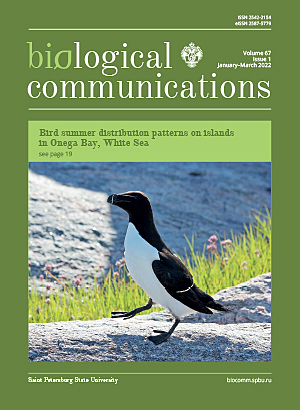Bird summer distribution patterns on islands in Onega Bay, White Sea
DOI:
https://doi.org/10.21638/spbu03.2022.103Abstract
We studied avian populations and distribution patterns on 20 islands in Onega Bay, White Sea, with transect surveys completed to register selected biotic and abiotic factors in July 2020. Bird population densities proved to be the highest on small secluded islands rarely visited by humans and on treeless islands. We also found positive correlations between the species richness and the island size, presence of woody vegetation, and human visitation. It is noteworthy that although human interference can cause species diversity on the islands to increase, the relative abundance of birds declined. Furthermore, species diversity increased due to the arrival of species atypical of this region and, hence, lacking the complete set of requisite adaptations. Further human pressure on the islands can eventually destabilise their avifaunal complexes and aggravate the current transformation of northern communities in response to climate change.
Keywords:
birds, White Sea, bird distribution, species composition, environmental factors
Downloads
References
Downloads
Additional Files
Published
How to Cite
License
Articles of Biological Communications are open access distributed under the terms of the License Agreement with Saint Petersburg State University, which permits to the authors unrestricted distribution and self-archiving free of charge.





